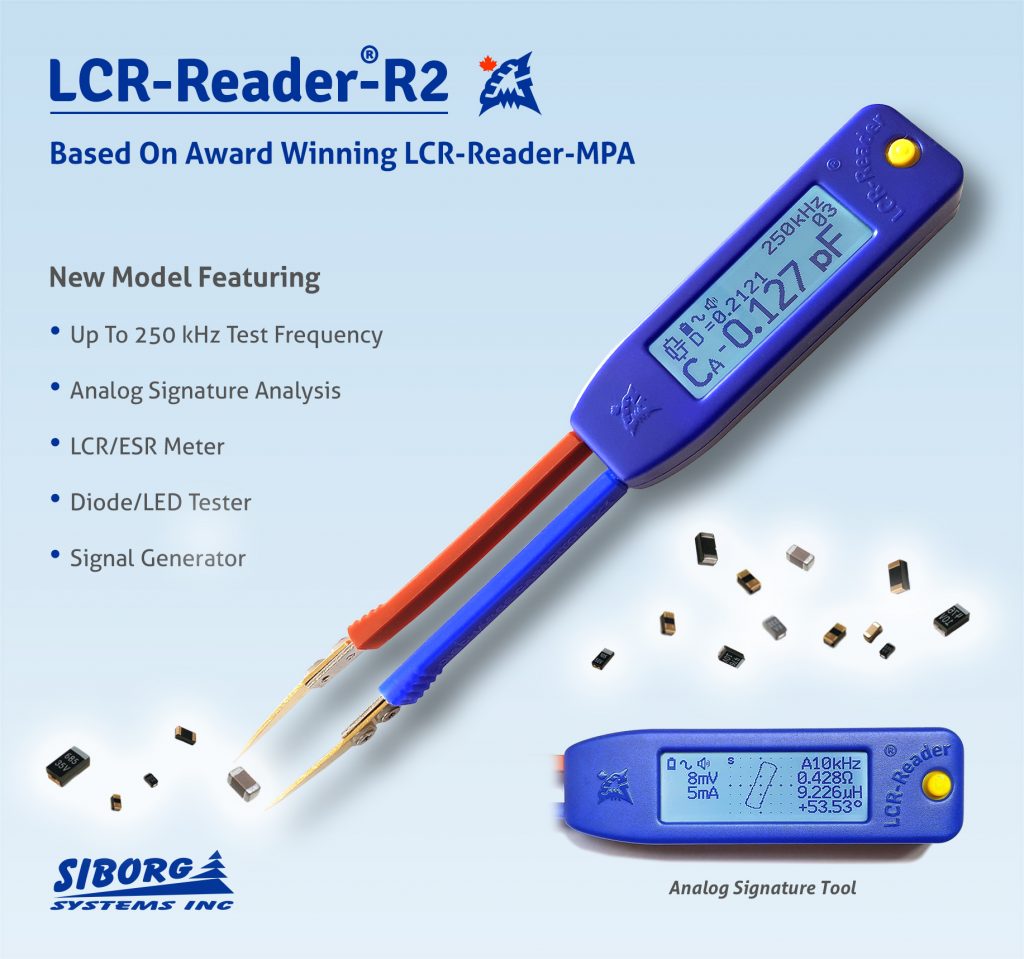Siborg’s newest device, the LCR-Reader-R2 is read for release. The new device is based on LCR-Reader-MPA, with features from the previous model and better stability for testing in-circuit measurements. The ability to switch test signal source resistance from 100 Ohms to 1.4 kOhms. The higher source resistance reduces noise when measuring small inductances.

R2 utilizes a different, more powerful MCU and therefor allows to process measurement at higher frequencies. This also allowed an implementation of additional test feature, the Analog Signature Analysis. ASA is a circuit board troubleshooting technique that uses an AC sine wave across two points of an electronic component or a circuit. The resulting waveform is displayed using current and voltage as x and y axis. This signature is compared to that of the known good circuit board or component allowing to determine the board or component health.
The R2 was supposed to initially have a 300 kHz test frequency, but after some preliminary testing, 300 kHz was too high without sacrificing measurement accuracy. The 250 kHz test frequency, along with the change in source resistance, is very important while testing small capacitance and inductances, and also while testing in-circuit.
The major differences between MPA and R2 is the removal of AC/DC current measurements, AC/DC voltage measurements up to 15 V, Frequency meter and Oscilloscope mode.
Features on R2:
- Automatic and manual LCR, ESR, LED/Diode measurements
- 0.1% basic accuracy
- Automatic test signal reduction to 0.1 V for in-circuit measurements
- Three test signal levels, 0.1, 0.5 and 1 Vrms
- Automatic and manual test frequency, including 100, 120 Hz, 1, 10, 20, 30, 40, 50, 60, 75, 100 and 250 kHz
- Measures components to a 0201 size (0.3 mm)
- Parasitic offset removal using easy Short/Open Calibration
- 1.5 oz. weigh
- Backlit LCD
- Displays active and reactive impedance compoennts
- gold-plated test leads
- NIST traceable calibration certificate.